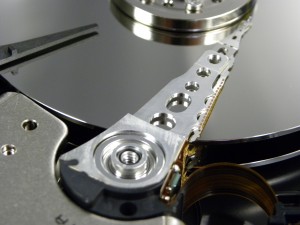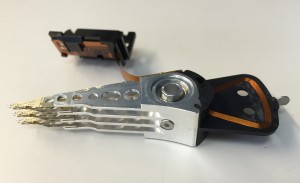 Hard disk drive failure is ultimately unavoidable. Every hard drive uses mechanical parts, and even with modern innovations like helium-filled enclosures, every mechanical component will eventually fail as these mechanical parts wear out. However, proper operating conditions can extend the life of a hard drive significantly, and regular backup can prevent problematic data loss.
Hard disk drive failure is ultimately unavoidable. Every hard drive uses mechanical parts, and even with modern innovations like helium-filled enclosures, every mechanical component will eventually fail as these mechanical parts wear out. However, proper operating conditions can extend the life of a hard drive significantly, and regular backup can prevent problematic data loss.
In order to learn about the hard drive data recovery process and the factors that affect hard drive failure, it’s helpful to understand how hard drives physically function. This article will provide some insight. If you need hard drive data recovery, please contact us at 1.800.237.4200 to speak with an expert.
A Look at the Components That Hard Drives Use to Read and Write Data
Modern hard drives consist of several basic components. Of course, these components are extremely complex, and data recovery requires an equally complex set of tools.
Major components include:
- Magnetic Platters – Made from glass or aluminum along with a ceramic substrate, the platters are coated with a thin magnetic film. This allows the heads to read and write magnetic charges. Hard drive platters are extremely sensitive, and if they sustain serious damage, data will become unrecoverable. However, they’re housed securely in an enclosure that prevents contamination (although contrary to popular belief, this enclosure is not airtight – an airtight enclosure would not allow the heads to operate properly).
- Spindle – A spindle spins the platters under read/write heads, which are able to magnetically write and read the data that the platters store. While in operation, the heads of the drive never actually come into contact with the hard drive’s platters unless the drive suffers a fairly severe physical failure; rather, they float slightly above the platters while reading, writing, and seeking information.
- Read/Write Heads – The heads of a hard drive can move back and forth across the surface of the platters at extremely high speeds in order to seek specific sectors of data. They’re also extremely precise, and read and write data at blindingly fast speeds. Because the heads of the hard drive are so sensitive, it’s important that hard drives aren’t subjected to large amounts of physical shock that may cause them to become damaged or misaligned.
- Printed Circuit Board – The PCB (the green electronics board on the bottom of the drive) of a hard drive often contains critical information that the drive needs to function properly in the form of specialized microcode.

This information is often specifically programmed to the board of the drive during the drive’s construction to meet each individual drive’s specifications, and as a result when a PCB fails this information must be reconstructed. However, most of the microcode is located on the platters (more on this in a moment). The board also allows your hard drive to communicate with your computer.
This is not a complete list of components. Hard drives also have air filters, a motor, and various cables and components that allow for physical functionality. Perhaps most importantly, hard drives have firmware that provides basic operational instructions, and firmware microcode plays an enormous role in the data recovery process.
A Basic Guide to Hard Drive Firmware
Hard drive firmware is located primarily within a service area on the platters, but a small amount is also located on the PCB. This microcode is often specific to its drive – transferring the firmware from one hard drive to another would cause the second drive to fail, even if it was from the same model number and drive family as the first.
Some of the most important microcode includes:
- Relational information about the drive’s heads. The drive must be programmed so its heads can work together. slight differences between drives make this information unique to every hard drive.
- Factory-born defects contained on the drive (often called a p-list). Again, this information is unique to every hard drive. By our calculations, the chances of two 300GB drives having the same factory defect table is roughly one in 500 trillion.
- A list of sectors that have gone bad since you owned the drive (called the G-list). While not as critical, a misappropriated sector can cause your data to become temporarily inaccessible. This should be recoverable by any competent data recovery company.
- The zone table of the drive. This critical piece of information tells the CPU the density of data on the platter as the heads move from the inner part of the platter to the outer edge.
- Heads map. This tells the drive in what order it should use a disk head, and also how many heads are in the drive.
- SMART log. This keeps track of operating specs, and flags the BIOS when failure is imminent.
Once again, this not a comprehensive list. In order to access or change any firmware information, however, data recovery providers need to fully understand how the firmware functions on the specific drive they’re working on; they must have detailed information about the microcode structure of that drive family. They must also have a specialized tool that can access and rewrite the microcode.
Datarecovery.com is a world leader in data technology, and we are authorized by all manufacturers to perform services on all hard drive models. We can repair or replace any component and work directly with hard drive microcode, and our various technology innovations translates to high success rates across all models.
For more information or to set up a hard drive data recovery evaluation, call us today at 1.800.237.4200.




